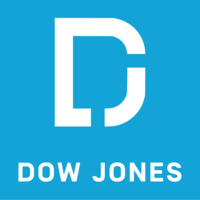CBA Plans Buyback as Annual Profit Falls 6% Amid Rate Pressures — Update
By Alice Uribe
SYDNEY--Commonwealth Bank of Australia posted a 6% fall in annual net profit, warning that downside risks are building as higher interest rates start to impact mortgage customers and cost-of-living pressures bite.
CBA, Australia's biggest bank by market value and the country's largest mortgage lender, said net profit for the 12 months through June fell to 10.09 billion Australian dollars (US$6.60 billion), from A$10.77 billion a year earlier.
Cash earnings--the measure followed by analysts that strips out items including hedging and losses or gains on acquisitions and asset sales--rose 6% to A$10.16 billion from the previous year. Cash earnings for the fiscal second half fell 3% compared with the first half.
"The Australian economy has been resilient with the tailwinds of a recovery in population growth, relatively high commodity prices and low unemployment," CEO Matt Comyn said.
"However there are signs of downside risks building as rising interest rates have a lagged impact on mortgage customers and other cost of living pressures become a financial strain for more Australians."
CBA said its portfolio quality remained sound with arrears and impairments below long-term averages, reflecting low levels of unemployment, and high levels of consumer savings and repayment buffers.
Yet troublesome and impaired assets increased to A$7.1 billion from A$6.4 billion in fiscal 2022, which CBA attributed to increases in the construction and commercial property sectors.
At the same time, total impairment provisions increased to A$5.95 billion from A$5.35 billion in fiscal 2022, which CBA said reflected the impact from ongoing cost of living pressures and rising interest rates on both the consumer and corporate portfolio.
The ultra-competitive home-loan market remained a factor for the lender's net interest margin, a measure of the difference between what a bank pays to get deposits and funds, and what it charges to lend money. CBA's fiscal 2023 NIM was up 17 basis points on the previous year to 2.07%, but fell 5 basis points in 2H from 1H.
"Margins increased year-on-year due to the rising interest rate environment, partly offset by the impact of increased competition, particularly in home lending. Monthly spot margins peaked in late 2022," said CBA.
On deposits, CBA said it continued to satisfy a significant portion of its funding requirements from customer deposits, accounting for 75% of total funding, with increases from retail, business and institutional customers.
CBA reported growth across core units, with retail banking services cash earnings of A$5.16 billion, up from A$4.91 billion the previous year.
Business banking cash earnings were A$3.97 billion, up from A$3.01 billion, but institutional banking and markets earnings were A$1.03 billion, down 3% from A$1.05 billion the previous year.
Comyn said the lender was seeing consumer demand moderate and economic growth slow.
"We are closely monitoring the impact of reduced discretionary spend, particularly on our small- and medium-sized business customers," he said.
Directors of the company declared a final dividend of A$2.40 a share, up from A$2.10 last year.
The bank's closely watched Common Equity Tier 1 capital ratio, a key measure of a bank's ability to withstand financial shocks, was 12.2% at the end of June, up 10 basis points since the end of December.
The lender said due to its strong capital position, it planned to launch a further A$1 billion on market share buyback across fiscal 2024 subject to market conditions. On completion, CBA said the bank's CET1 ratio is expected to reduce by approximately 20 basis points.
CBA successfully completed A$3 billion on-market share buyback during fiscal 2023.
Write to Alice Uribe at alice.uribe@wsj.com
(END) Dow Jones Newswires
August 08, 2023 18:57 ET (22:57 GMT)
Copyright (c) 2023 Dow Jones & Company, Inc.-
Why Immigration Has Boosted Job Gains and the Economy
-
What to Invest in During High Inflation
-
Never Mind Market Efficiency: Are the Markets Sensible?
-
Starbucks Stock Could Use a Pick-Me-Up After Big Selloff; Is it a Buy?
-
5 Cheap Stocks to Buy From an Attractive Part of the Market
-
Markets Brief: All Eyes On Inflation
-
5 Things We Learned From the Q1 Earnings Season
-
After Earnings, Is Palantir Stock a Buy, a Sell, or Fairly Valued?
-
Going Into Earnings, Is Target Stock a Buy, a Sell, or Fairly Valued?
-
Walmart Earnings: Low Prices and Strong Digital Presence Drive Market Share Gains
-
After Earnings and a Big Selloff, Is Shopify Stock a Buy, a Sell, or Fairly Valued?
-
Cisco Earnings: Positive Guidance and Splunk Inclusion Align With Our Long-Term Thesis
-
3 Warren Buffett Stocks to Buy After Berkshire Hathaway’s Just-Released 13F Filing
-
Going Into Earnings, Is Nvidia Stock a Buy, a Sell, or Fairly Valued?
-
After Earnings, Is Arista Stock a Buy, a Sell, or Fairly Valued?
-
A Cheap Dividend Aristocrat to Buy Before It Bounces Back

